 |
 |
Dancing hues: A painted feature on dance - Padma Jayaraj e-mail: padmajayaraj@gmail.com September 15, 2016 Dancing Hues by Nirupama Ramesh was a unique show that exhibited a series of paintings done by her on dance, in Lalitkala Akademi Hall, Thrissur, Kerala. Nirupama, trained as a landscape artist, quit her job to enter the field of sculpture and painting. Perpetuating the family legacy from her grandfather, a war veteran who was a gifted sculptor, Nirupama took another bylane. From sculpting miniature clay models of musical instruments she is moving ahead with scale models. Based in the Middle East, she loves to travel. Travels opened the gates of different dance forms which inspired her to take up the brush. With the iconic Nataraja presiding over her venture the show Dancing Hues opened Nirupama’s wonder world. Her paintings fall into three categories found all over the world: folk, religious, and classical, with an introductory note to each to guide the viewer. Nataraja, the iconic dancer brightened by a huge lighted lamp takes the viewer to the world of dance. Each painting, acrylic on canvass (90cm x 60cm), is curated in such a way that you feel you are entering the threshold of a dome in which dancers are caught within their movement. Their costumes and their characteristic feats reveal their identity. Except some, most of the paintings do justice to the dance form. 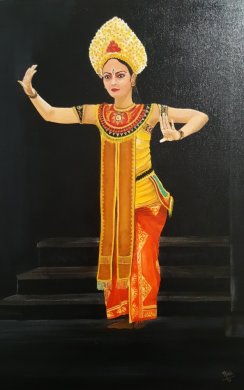 Balinese dance: In the island of Bali in Indonesia, the epic performances of the Ramayana and Mahabharata are common. The dancer here portrays the Balinese version of the Hindu epics. 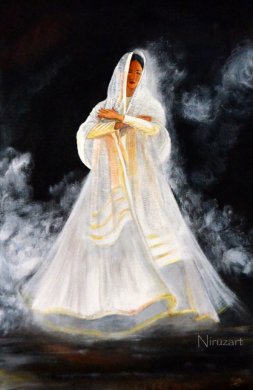 Sufi Kathak blends the mysticism of Sufism with the classicism of Kathak. Sufi poetry existed in the form of Qawwalis in the Indian sub-continent and Kathak is a classical art form of western India. Sufi Kathak is a part of the mainstream; the theme, costume and music are different but the grammar is the same. 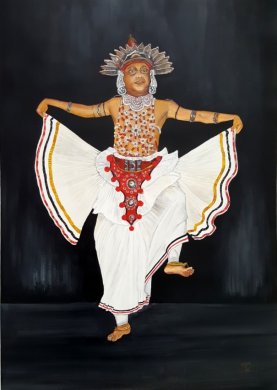 Kandyan dance native to Kandy, in the central hill region of Sri Lanka originated from an ancient purification ritual performed by males. The elaborate costume, particularly the headgear, is considered sacred. Today the elaborately costumed dancer epitomizes Kandyan dance, which highlights Sri Lanka's culture. 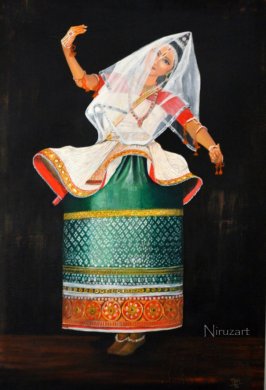 Manipuri from the North Eastern state of Manipur is a riveting dance form unique in its costume. 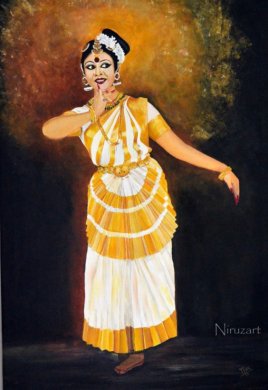 Mohiniattam, the dance of the enchantress of Kerala, is associated with the famed Swathi Thirunal. 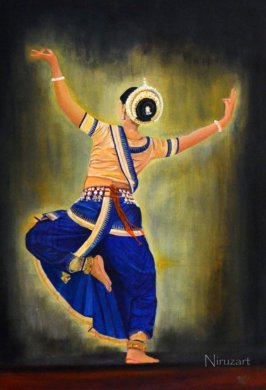 Odissi originated in Odisha in Eastern India is known for its sculptural stances and poses. 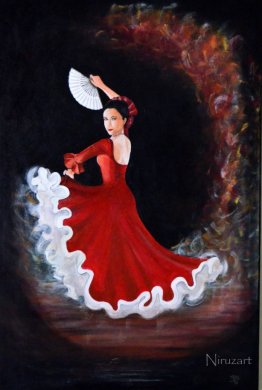 Spanish Flamenco, known for its gypsy origin is a vigorous dance form emphasizing the rhythmic tapping of the foot. A popular dance in theatrical settings, today is still performed in people’s homes to celebrate occasions. 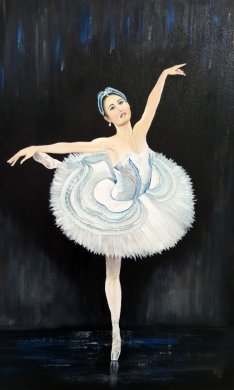 Ballet Originated in the days of Italian Renaissance, Ballet developed into a concert dance in France and Russia. Women in billowing white skirts dance on their toe.  Bharatanatyam that evolved from Daasiyattam of ancient times is an Indian classical dance today. It was performed in temples of Tamilnadu. Some believe that it used to be a fire dance, the mystical manifestation of the metaphysical element of fire in the human body. The movements of a dancing figure resemble a dancing flame. 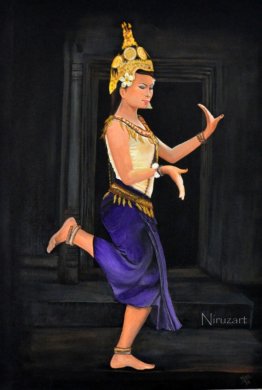 Known as Khmer, the classical dance of Cambodia belongs to the Royal court, ceremonial in function. Its elaborate costume, stylized gestures accompanied by an ensemble of traditional music and instruments has a unique charm. 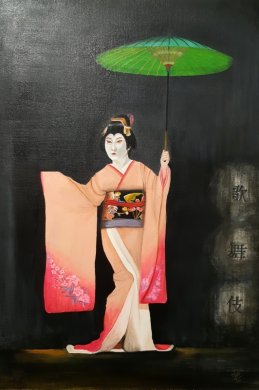 Kabuki, a classical Japanese theatre-dance is famous as the “art of singing and dancing.” Kabuki theatre is known for its stylization of its drama and for the elaborate make- up forming a language of signs and signals. 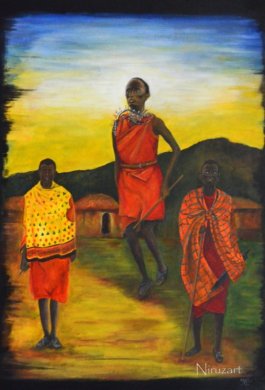 Masai Adumu dance of Kenya, Africa, is a folk form performed by the Masai tribe. The jumping dance celebrates the coming of age of a young warrior. Within a circle, two or three young men start the jumping dance, always on their toes and maintaining an erect posture. The highest jumper gets the bride. 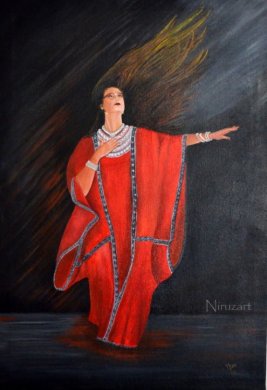 Kialegee is from Middle East. The female dance is a celebration of the body. The movements are very feminine and rhythmic. The dancers move to create undulating forms resembling the waves of the sea. The long hair flowing in the wind is characteristic of this picturesque folk form of the island nations of the Middle East. 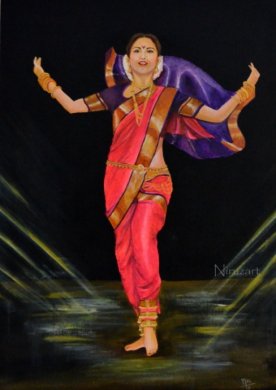 Lavani from Maharashtra is a vigorous folk dance in traditional costume of 9 yard saree. The sensuous performance synchronizes with the captivating rhythms of dholak, the native percussion of the land.  Kartuli is the quintessential Georgian dance. Only the female figure is painted here. The couple performs the dance, which has not been choreographed for the stage to date. But dancers follow definite rules of sequence between the male and the female. The dance expresses chivalry of Georgian times. 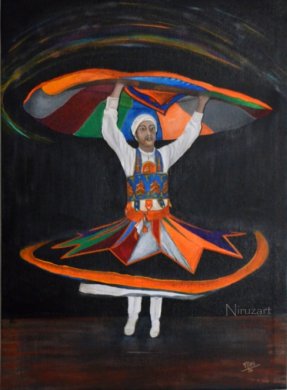 Tanoura refers to the colorful skirt of the dancer which has function in its whirling movement. The sufi dance has a visual effect with the swirling skirt enhancing a dynamic centrifugal balancing feat. 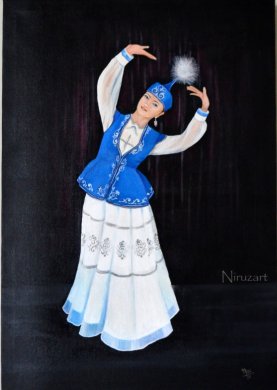 In Kazakhstan, based on the ethnographic observations of the local nomads, Soviet choreographers invented traditional Kazakh folk dances such as Akku. Many cultures in Kazakhstan have a strong tradition of instrument playing, traditional dancing, and theatrical performance. The cities of Kazakhstan cater to the promotion of performing arts. 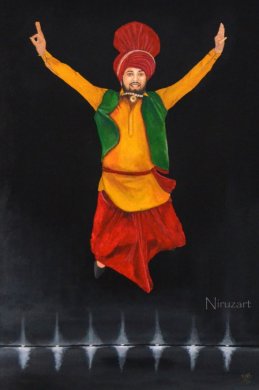 Bhangra from Punjab is a lively form of music and dance. While Bhangra began as a part of harvest festival celebrations, it eventually became a part of such diverse occasions as weddings and New Year celebrations. 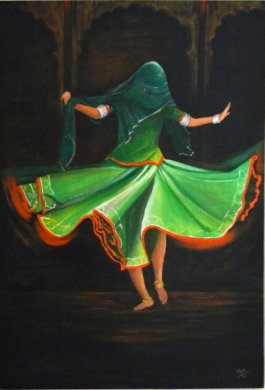 Ghoomar, a traditional folk dance of Rajasthan among the Bhil tribe is performed by women in swirling skirts accompanied by singing of men and women. This folk dance gets its name from ‘ghoomna,’ the pirouetting which displays the spectacular colors of the flowing ‘ghaghara,’ the long skirt of the Rajasthani women. There is an amazing grace as the skirts flair slowly while the women twirl in circles, their faces hidden behind their veils. They use measured steps and various graceful inclinations of the body, beating palms or snapping fingers at particular cadences while singing lilting songs. Mostly Goddess Saraswati is worshiped during this dance. 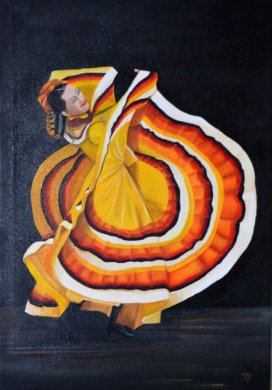 Mexican folk dance is an uneven synthesis of different cultural traditions. Its historical roots are the synthesis of indigenous, European and African cultural influences but it continues to evolve with influences from modern pop culture. It is not one particular style but rather a collection of various regional and ethnic traditions. Traditional Mexican folk dance is a defining element of Mexico’s popular culture nationally and internationally. Padma Jayaraj is a freelance writer on the arts. She is a regular contributor to www.narthaki.com. |